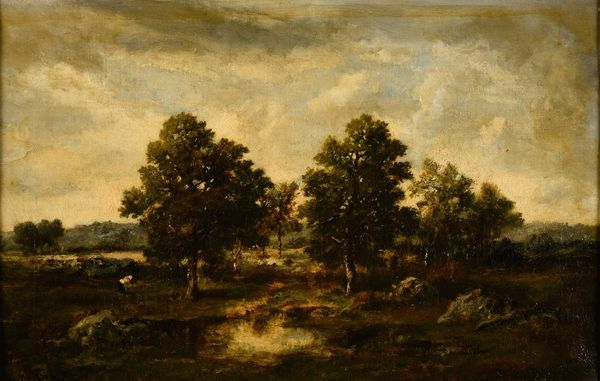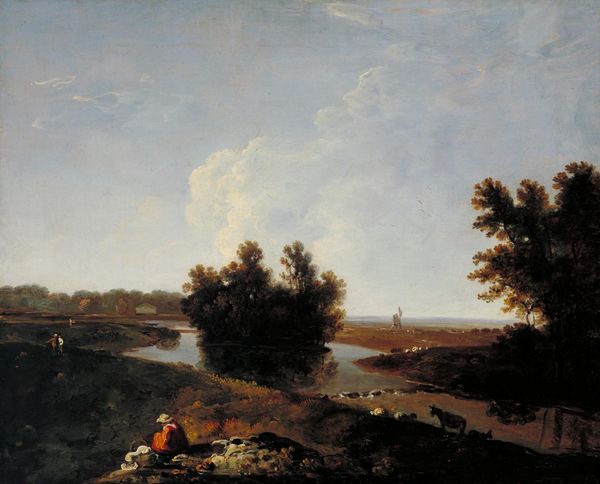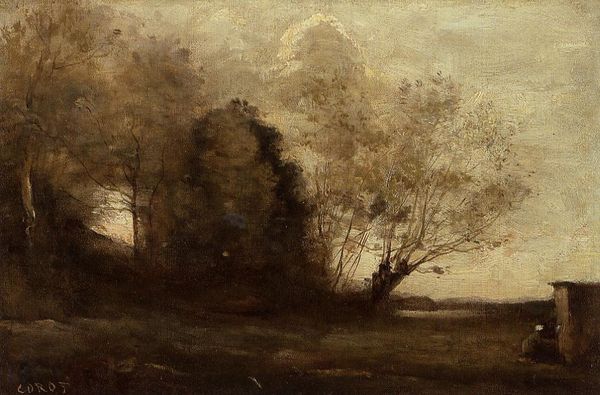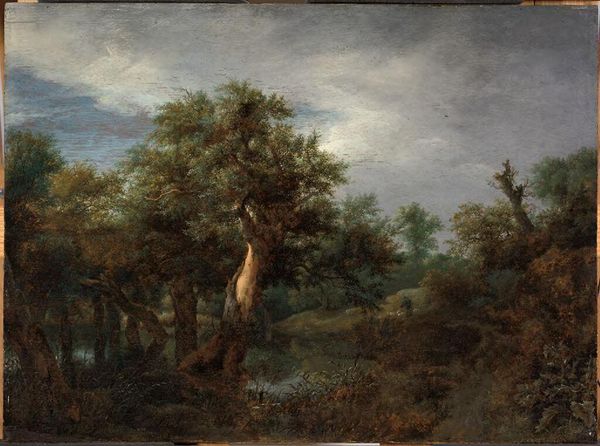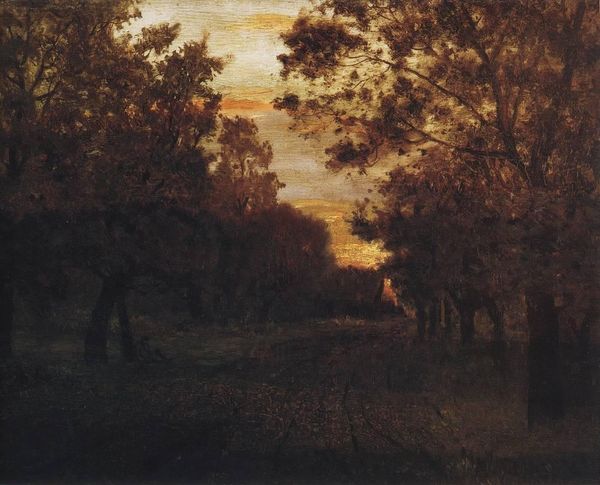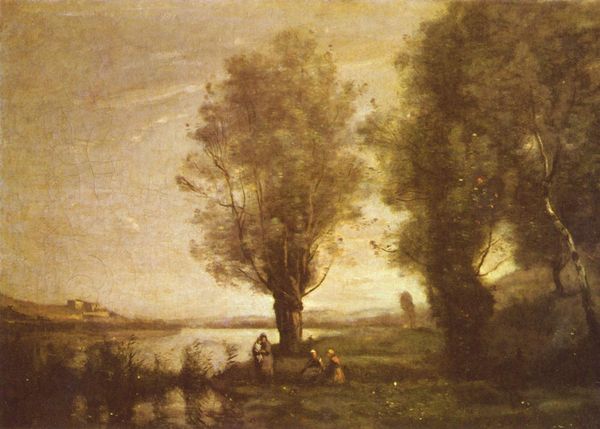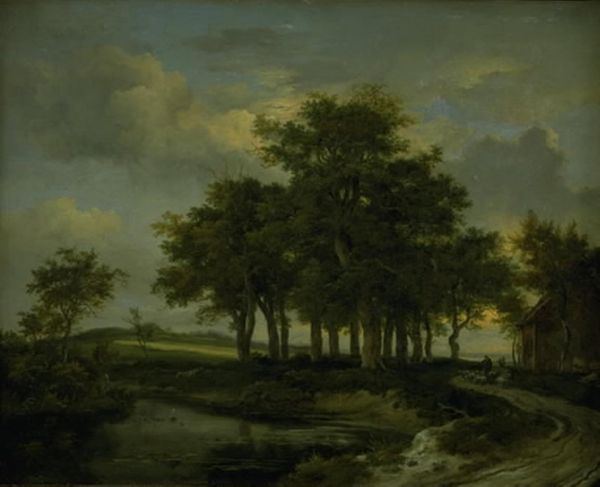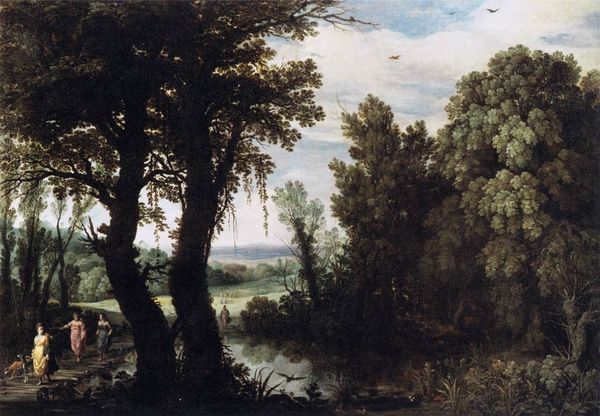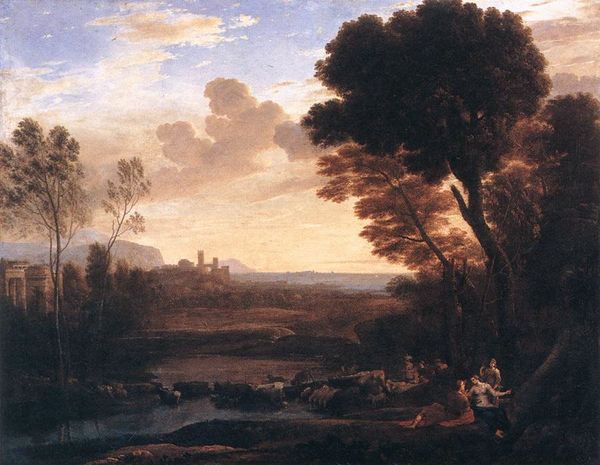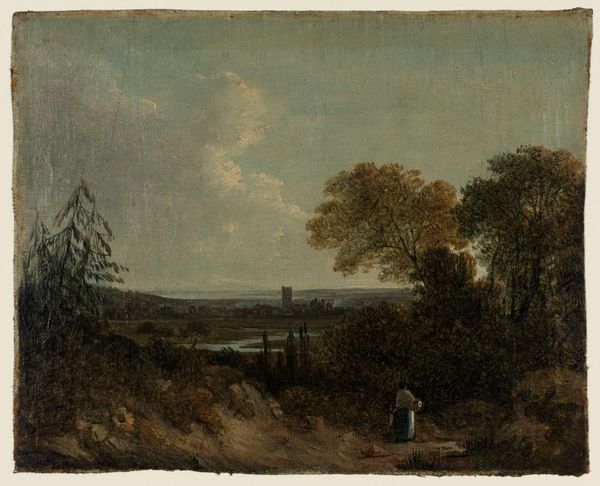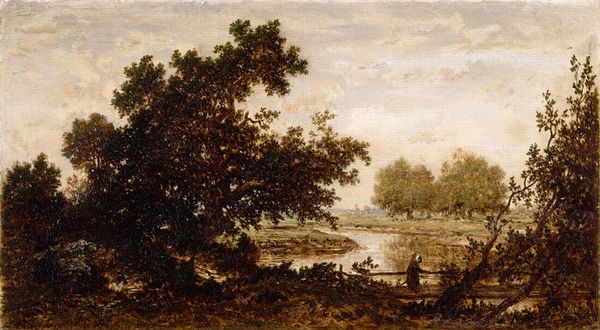
painting, plein-air, oil-paint
#
sky
#
painting
#
countryside
#
plein-air
#
oil-paint
#
landscape
#
charcoal drawing
#
nature
#
romanticism
#
fog
#
watercolor
#
mist
Copyright: Public domain
Editor: Here we have "At Honingham, Norfolk," an oil painting attributed to John Crome. It feels very subdued and muted to me, almost dreamlike with the soft, blending tones. What stands out to you in this piece? Curator: Immediately, I'm drawn to the materials themselves. Look at how Crome uses the oil paint – thinly layered, almost translucent in the sky, thicker and more impastoed in the trees. What kind of labor goes into that careful build-up, and what does that suggest about his relationship to the landscape itself? Editor: That’s interesting, I hadn’t thought about the layers of paint as related to labor. It does seem deliberate. Curator: Absolutely. Think about where Crome was working – in Norfolk, a landscape transformed by agricultural labor and increasingly by industrial capitalism. How might painting "en plein air", as he often did, have represented a specific kind of engagement, or even resistance, to those forces? Consider the accessibility of painting, the cost of the canvas and paints themselves – who had the ability to depict landscapes in this period? Editor: So, looking at the process helps us understand its social context? The kind of person who made this painting, and how? Curator: Precisely. How does Crome’s emphasis on materiality challenge or reinforce the established artistic hierarchy of his time? Is landscape painting a 'high art' compared to, say, the detailed craft involved in building a barn? Or are they both simply different modes of working and of looking at our place in nature? Editor: I see what you mean. I was so focused on the romantic, misty feel that I missed the material choices he made. Curator: The "misty feel" is an effect achieved through a very deliberate material process, after all. Editor: That makes a lot of sense. Thanks, I'll definitely look at paintings differently now, thinking more about how they were physically made and by whom!
Comments
No comments
Be the first to comment and join the conversation on the ultimate creative platform.
